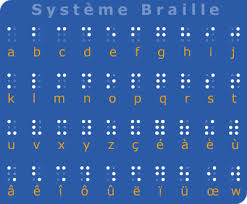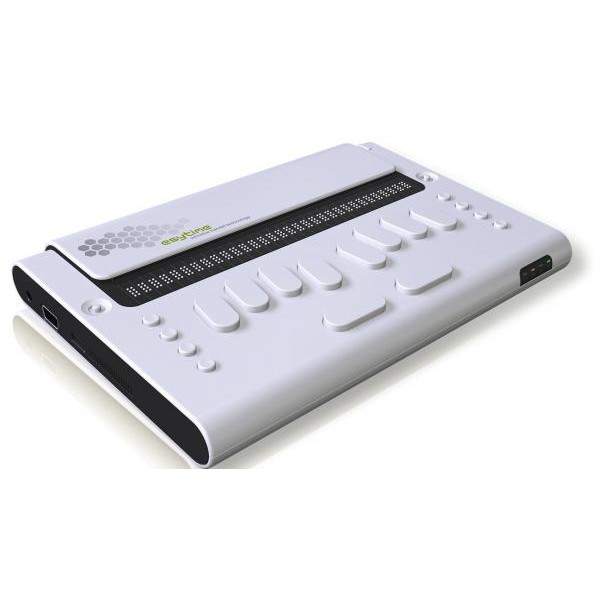
In our world that basically revolves around what can be seen, living without sight is a challenge.
Despite this, Braille is losing ground. Only 6% of books published in France are also available in Braille, and visually impaired students’ schooling is inadequate for this very challenging task, and Braille instruction is thus in decline.
Yet writing is one of mankind’s very foundations. While the first hieroglyphs appeared in Egypt around 3,000 BCE, blind people had to wait almost another four millennia, before Louis Braille invented his eponymous writing system for them in 1825, thus finally making them full citizens.
When a part of humanity is deprived of its fundamental right to education, it is a setback for all. Accepting and integrating visually impaired people into our society is not only an opportunity for them, but benefits all of humanity.

Did you know ?
Braille is universal and available in every language in the world, including Esperanto. It is currently used by six million blind people around the world.
Being a perfectly binary system, it also handles digital conversion, enabling it to increasingly be read and written on digital media (computers, tablets, etc.). Louis Braille pioneered tactile communication two hundred years before Steve Jobs!
Good Braillists have an average speed of 125 words a minute, which matches the average speaking rate. People with visual impairments can read up to 138 words a minute with both hands when they have learned Braille at a very young age. Sighted readers can read up to 250 words a minute!
Visual impairment statistics
In France
- 1.7 million people suffer from visual impairment.
- 207,000 are blind (no light perception) or severely visually impaired (residual vision restricted to distinguishing silhouettes); 932,000 are moderately visually impaired (for distance vision, they cannot distinguish a face at 4 m distance and in near vision, they are unable to read).
- 1 blind person is born every 15 hours.
- A person is declared blind when his or her best-corrected visual acuity is 1/20 or less, or she/he has a visual field of less than 10 degrees from the point of fixation.
- Among the main causes of visual impairment among the elderly are uncorrected vision disorders, cataracts, glaucoma and AMD (age-related macular degeneration), which is the main cause of blindness among older people in Western countries, with first symptoms generally appearing after the age of 50.
In the world
- An estimated 253 million people are visually impaired: 36 million are blind and 217 million have moderate to severe visual disabilities.
- 81% of the population that are blind or have moderate or severe visual impairment are at least 50 years old.
- Chronic eye disease is the leading cause of visual acuity loss worldwide. Uncorrected refractive errors and uncorrected cataracts are the two leading causes of visual impairment. In resource-poor countries, untreated cataracts are the world’s most common cause of blindness.
- There has been a significant decline in rates of infectious eye diseases, like trachoma and onchocerciasis, over the last 25 years. L
- More than 80% of all visual impairments are preventable or curable.
According to the WHO (World Health Organization), the number of visually impaired people is expected to double by 2050. Blindness and poor vision will become, along with Alzheimer's disease, the greatest scourges of old age.
Some statistics for France
Education for the blind and visually impaired : Almost 10,000 blind people and about 35,000 people with amblyopia or “lazy eye” (with decreased vision in one eye) are enrolled in school each year.
Employment of blind and partially sighted individuals : Today, 50% of people with visual impairments are unemployed.
New Technologies for the Blind and Visually Impaired : 80% of respondents use either a laptop computer (41%) or a desktop computer (39%) as their primary computer equipment when browsing the Internet.
14% use a smartphone and 6% use other means of communication (tablets, etc.).
Accessibility for the blind and visually impaired : Only 10% of websites are made usable for the blind and visually impaired, and 6% of books are accessible to the blind and visually impaired. Of 500 movies released in cinemas each year, only 20% have audio descriptions. On television, only 4% of programs currently have audio narration.